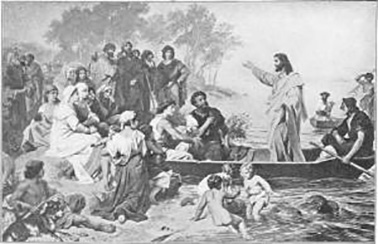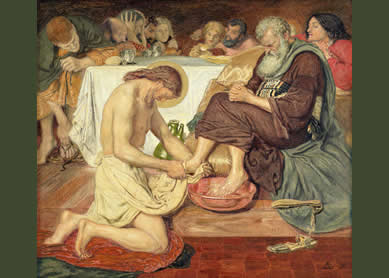They are everywhere Jesus goes. They are curious, desperate, hopeful, amazed. They seek out his healing powers. They gather to listen to his teaching and they bring him their sick, their demon-possessed, their lame, their blind. They listen in astonishment when Jesus tells them that the kingdom of God belongs to them (
Who are they? They are the crowds. Likely, they are peasants and farmers and fishermen—the poor, the lower classes of society, the “people of the land.” But they are also tax collectors (who were hated by some for collaborating with the occupying power, Rome), prostitutes, and those labeled “sinners” by the religious powers that be. Mostly nameless and faceless, they act as a single character in the unfolding drama of Jesus’ public ministry in Galilee. They are the people who are healed, forgiven, and freed from demonic powers. Occasionally, one of them will step forward and take shape as an individual character: a blind man named Bartimaeus sees for the first time (
Who are they? They are mostly Israelites, Galileans and Judeans, people who worship the God of Israel while under occupation by the Roman Empire. But some of them are Gentiles, non-Israelites. One of the individual characters who emerges from the crowd is a Gentile woman from Syria who engages in a verbal sparring match with Jesus until he grants her request and heals her daughter (
In many ways, the crowds are the flashpoint of the controversies swirling around Jesus. When he heals them on the Sabbath, he is accused of breaking the Jewish law. When he eats with them, he is accused of being a glutton and a drunkard (
Jesus seems to love the crowds of Galilee. For the most part, he avoids Jerusalem and the larger cities and spends his time near the sea, in the farms and smaller villages. When he looks at thousands of them gathered on a hillside to hear him preach, he sees their hunger, and he feeds them (
The crowds play an important symbolic role in the Gospels as well. They represent the common people of Israel in contrast to their religious leaders. Jesus describes them with compassion as sheep without a shepherd, harassed and helpless, and this is almost certainly a sharp criticism of the leaders of Israel, who ought to have been their shepherds (
The crowds also symbolize potential disciples. The ultimate question is this: will the crowds stay with Jesus and become his followers, or will they turn away and desert him in the end?


